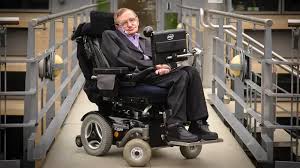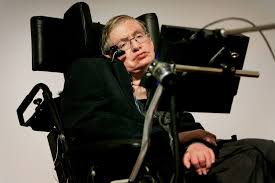Stephen Hawking: A Journey Through Space and Time
Page Contents
ToggleStephen Hawking was one of the most brilliant minds of the 20th and early 21st centuries. His work on black holes, the nature of the universe, and his compelling personal journey captivated millions worldwide. Even after his passing in 2018, his legacy lives on through his contributions to theoretical physics, his books, and his influence on popular culture.
Early Life and Education

Stephen Hawking was born on January 8, 1942, in Oxford, England, exactly 300 years after the death of Galileo, one of the pioneers of modern science. Although his family was highly intellectual, their means were modest. Hawking’s father was a biologist, and his mother was one of the first female students to graduate from Oxford University. This intellectual atmosphere helped shape Hawking’s curiosity and enthusiasm for science from an early age.
At school, Hawking was not initially recognized as a standout student. However, he excelled in mathematics and physics, which led him to pursue further studies in these fields. He attended University College, Oxford, where he studied physics, as mathematics was not offered at the college at that time. After graduating, Hawking moved to Cambridge to pursue a Ph.D. in cosmology.
Diagnosis and Overcoming Challenges
At 21, while still a graduate student at Cambridge, Hawking was diagnosed with amyotrophic lateral sclerosis (ALS), a neurodegenerative disease also known as Lou Gehrig’s disease. Doctors initially gave him only a few years to live. This diagnosis could have ended Hawking’s academic career before it even began. However, his determination and passion for physics drove him to continue his work.
Despite the progression of the disease, Hawking adapted and learned to work within his physical limitations. As he lost the ability to write, he developed a way to visualize complex equations and problems in his head, an ability that would become one of his unique strengths. His condition also required him to rely on a wheelchair and later a speech-generating device, which gave him a distinct “robotic” voice that became iconic.
Contributions to Theoretical Physics
Hawking’s contributions to theoretical physics, especially his work on black holes, are among the most celebrated achievements in the field. Early in his career, he worked with mathematician Roger Penrose, applying Einstein’s theory of relativity to study the origins of the universe. Their work on the “singularity theorem” showed that the universe had a beginning, a revolutionary concept that challenged previous beliefs.
Hawking Radiation
One of Hawking’s most famous theories is the concept of Hawking radiation. Traditionally, black holes were thought to be cosmic vacuums that absorbed everything around them, including light. However, Hawking proposed that black holes could emit particles, a phenomenon now known as Hawking radiation. This idea suggested that black holes could eventually “evaporate” over time, fundamentally changing how scientists understand these mysterious cosmic entities.
The Black Hole Information Paradox
Hawking’s work on black holes also led to the black hole information paradox, which questioned the nature of information in physics. According to quantum mechanics, information about matter is never truly lost. However, if black holes evaporate and disappear, what happens to the information within them? Hawking’s theories sparked decades of debate and research, leading to new insights and theories that continue to shape physics.
The Universe and Quantum Cosmology
Hawking’s interest in the origins and nature of the universe extended to quantum cosmology, a field that combines quantum mechanics with general relativity. In his 1983 paper, he introduced the concept of the “no-boundary proposal” with James Hartle, which suggested that the universe had no specific beginning. This theory proposed that time itself could be finite, but without a clear starting point, akin to the surface of a sphere where every point is the same as every other.
Popularizing Science

Hawking was not only a brilliant scientist but also an exceptional communicator. His ability to explain complex scientific concepts in layman’s terms helped make science accessible to the general public. His best-selling book, A Brief History of Time, published in 1988, sold millions of copies worldwide. This book, which aimed to answer fundamental questions about the universe and the nature of reality, became one of the most influential science books of the 20th century.
The Universe in a Nutshell, The Grand Design, and Black Holes and Baby Universes are other notable works that contributed to Hawking’s reputation as a popular science writer. Through these books, Hawking reached millions who may not have otherwise engaged with subjects like quantum physics and cosmology. His writing style, wit, and ability to convey complex theories made him a beloved figure in science and literature.
The Legacy of Stephen Hawking
Stephen Hawking influence extends beyond academia. His work inspired countless people to explore science, question the universe, and think about the origins of life and the cosmos. His unique life story, marked by overcoming tremendous physical challenges, is a testament to the power of human resilience and intellectual curiosity.
Stephen Hawking legacy is also preserved through various institutions and honors. He was appointed Lucasian Professor of Mathematics at Cambridge, a position once held by Sir Isaac Newton, one of his intellectual idols. Despite his passing, his work and ideas continue to inspire physicists, cosmologists, and the general public.
The Public Persona and Cultural Impact
Stephen Hawking was a cultural icon, appearing in numerous television shows, movies, and public appearances. His distinct speech-generating device voice became familiar to millions. Hawking’s humor and wit made him a popular guest on shows like The Simpsons, The Big Bang Theory, and Star Trek: The Next Generation. These appearances helped cement his status as a celebrity scientist, making theoretical physics part of popular culture.
Stephen Hawking life story was also portrayed in the biographical film The Theory of Everything, which chronicles his early years, diagnosis, and relationship with his first wife, Jane Hawking. The film brought Hawking’s story to an even wider audience, further cementing his status as a beloved and respected public figure.
Personal Life and Relationships
Stephen Hawking personal life was complex, marked by both love and struggle. His first marriage to Jane Wilde was a major source of support during the early years of his illness and career. Together, they raised three children. However, as Hawking’s fame grew and his disease progressed, their marriage faced increasing strain, leading to a divorce.
Stephen Hawking later married his nurse, Elaine Mason, though this relationship also ended in divorce. Despite these challenges, Hawking remained close with his family and continued to contribute to science, supported by a dedicated team of caregivers and colleagues.
Technological Innovations and Adaptations

Living with ALS required Hawking to rely on a range of technologies, especially in his later years. His speech-generating device, developed with the help of engineers at Intel, allowed him to communicate despite the near-total loss of physical movement. This device became an essential tool, allowing him to continue lecturing, writing, and engaging with students and the public.
The technology evolved over time, allowing him to control the device with a cheek muscle. This setup enabled him to write books, deliver lectures, and engage in complex thought processes despite his severe physical limitations.
The Search for Extraterrestrial Life
Stephen Hawking was an advocate for the jonitogel search for extraterrestrial intelligence. He supported initiatives such as the Breakthrough Listen project, which aimed to scan the cosmos for signs of alien life. Stephen Hawking believed that finding extraterrestrial life would be one of the most significant discoveries in human history, though he also warned of the potential dangers of contact with advanced civilizations. His thoughts on this topic highlighted the balance of curiosity and caution that marked much of his scientific philosophy.
Contributions to Humanity and Philosophy
Stephen Hawking contributions go beyond the realm of theoretical physics. He often spoke about humanity’s future, particularly concerning space exploration and artificial intelligence. Stephen Hawking was a proponent of expanding human presence beyond Earth, believing that doing so could safeguard humanity’s survival. He cautioned against the uncontrolled development of artificial intelligence, warning that it could be either the best or worst thing to happen to humanity.
He encouraged people to appreciate the beauty of the universe, despite its complexity and often unforgiving nature. His perspective on life and existence resonated with millions, encouraging others to pursue knowledge, remain curious, and value every moment.
Final Reflections and Continuing Influence
Stephen Hawking’s life and work continue to inspire scientists, students, and enthusiasts worldwide. His theories about the universe and black holes remain a foundation for current research in cosmology, and his insights continue to challenge and push the boundaries of what is known about space, time, and the nature of reality.
Through his books, lectures, and personal story, Stephen Hawking achieved something rare: he made science accessible, interesting, and meaningful to people across the world. His life serves as a reminder of the power of human resilience, the limitless potential of the mind, and the wonder of the universe that surrounds us. As we continue to explore and uncover the mysteries of space, Stephen Hawking’s contributions will always be a guiding light, showing us that even the most complex questions can bring us closer to understanding our place in the cosmos.
